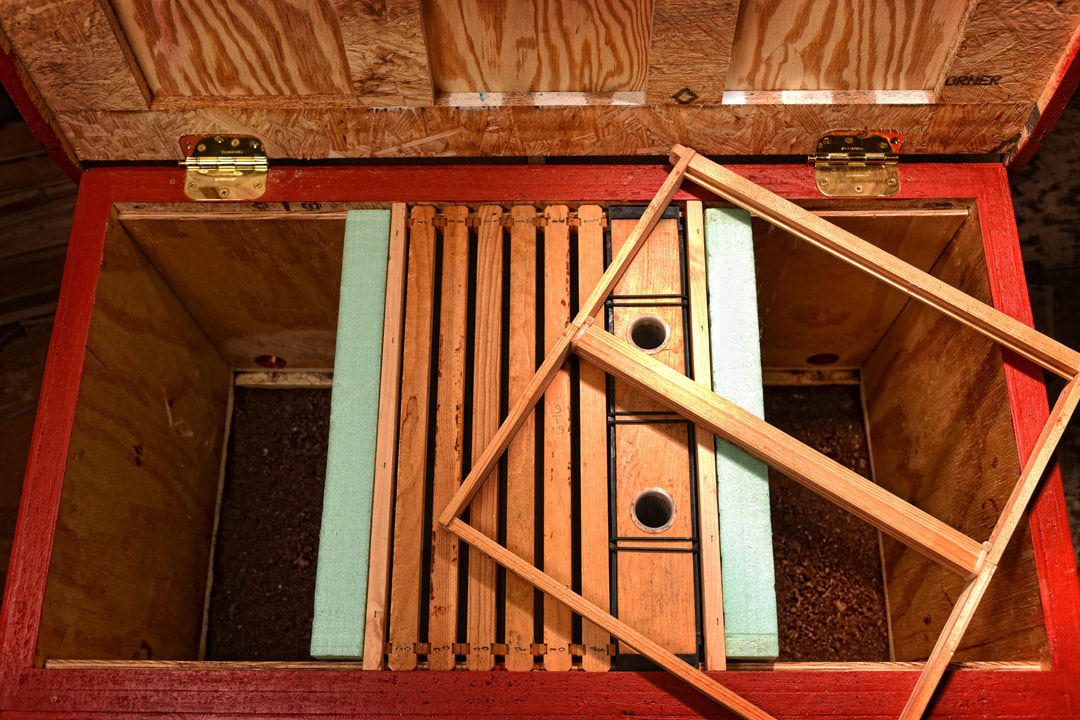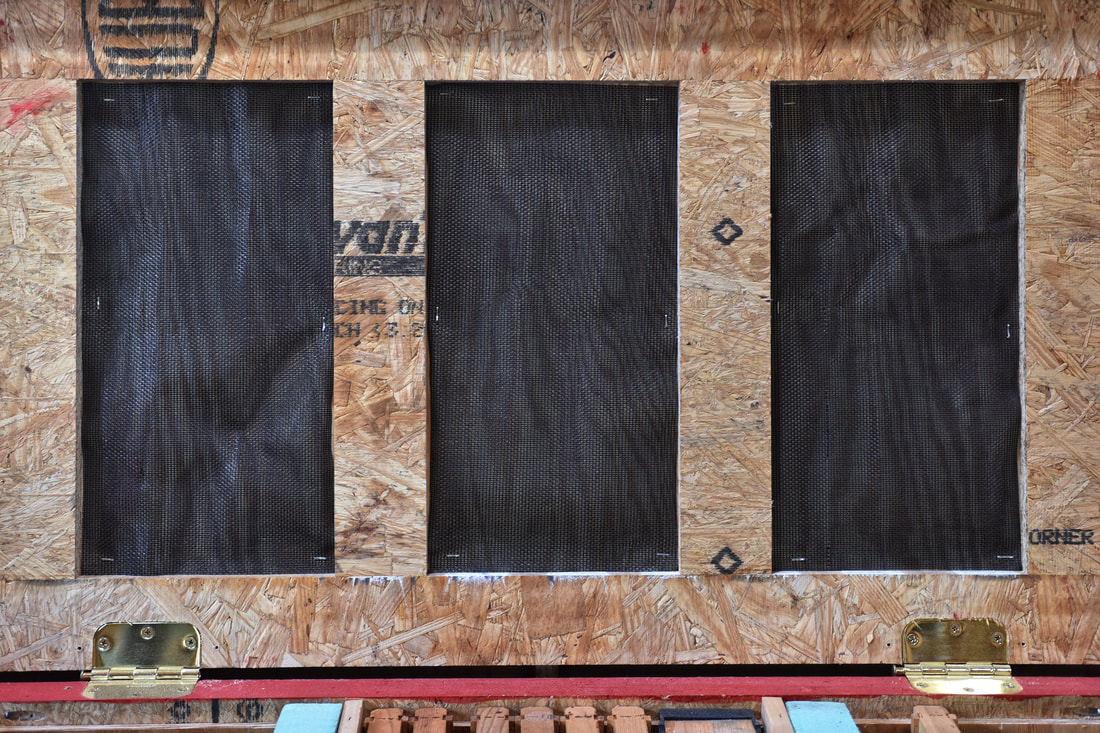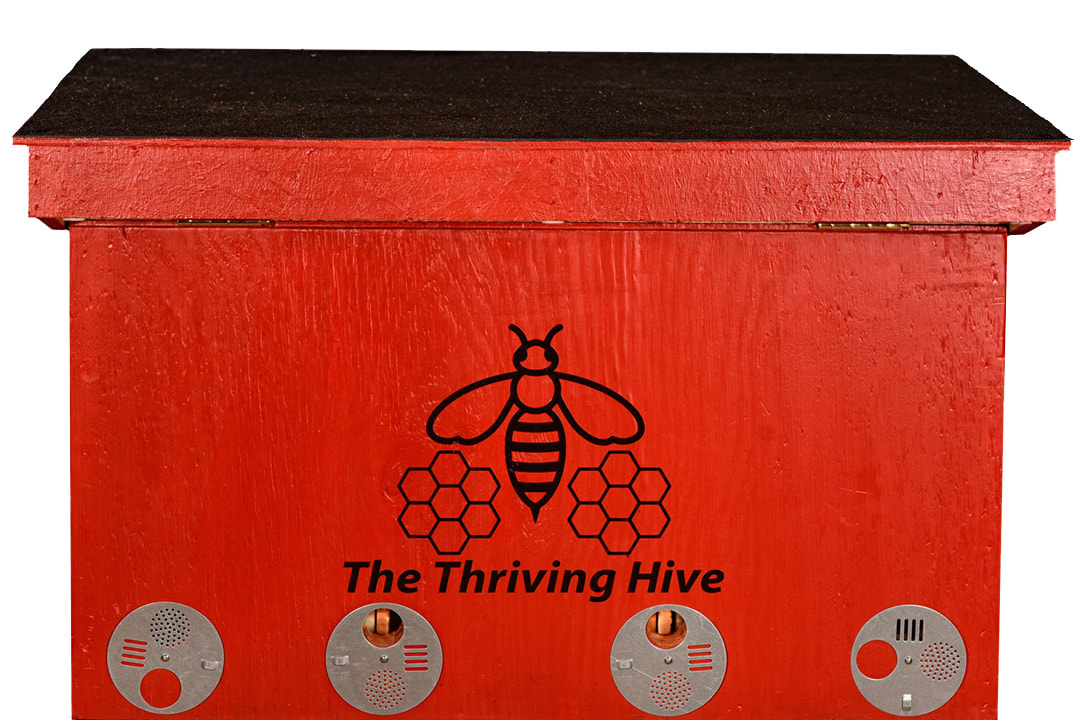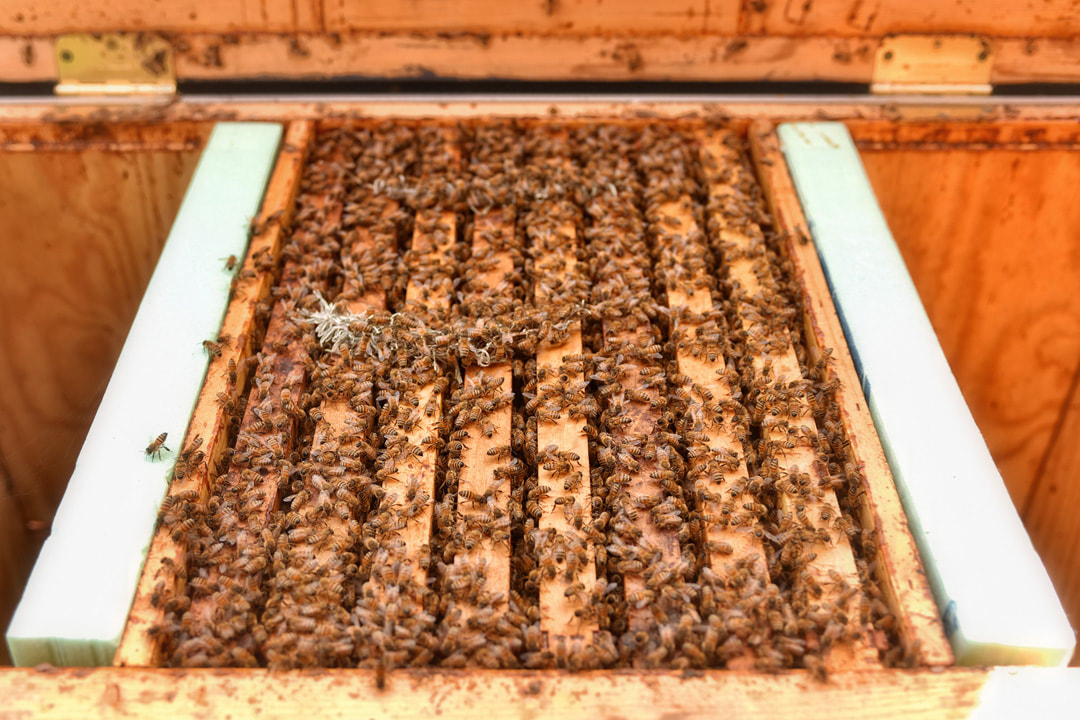The Thriving Hive Bee Box...The One Hive Revolution!
What most hobby beekeepers want is a good hive that either pollinates their garden, or produces enough honey for their family. Unfortunately most hobby beekeepers end up spending thousands of dollars on equipment and bees, and in the end have a track record of dead bees year after year before the quit. The Thriving Hive Box system was designed to not only keep your bees alive, but also to be managed so you will get plenty of honey, while leaving your bees more than enough honey to thrive!
The box was designed by looking at how bees live in nature, and with each refinement began to put "nature in a box". Bees naturally live in the hollows of trees, where the walls are thick wood, the bottom filled with punky wood, and the top the "R" value of a whole tree! In the summer the leaves of the tree shade the colony to keep them cool, but in the winter when the leaves are gone, can be warmed by the sun. This is how the Thriving Hive box was designed!
The walls of the box are insulated, as is the top of the box with "R" 20 insulation. The bottom of the box gets 2" of peat moss, which helps to absorb moisture, insulate the bottom, and create the micro climate you might find in a hollow tree. The frames of the Thriving Hive box are simply standard Langstroth frames tied together, with the ears of the bottom frame cut off, and can be easily separated so they can be placed in honey extractors when harvest time comes around. The box when fully loaded can hold 25 of these frames, which means 50 Double Deeps. In the winter the bees are kept in the center of the box, where the number of frames wide can be adjusted to fit the size of colony you have. Doing this keeps the from breaking cluster to much over winter, but with the insulated box the temperatures in the box drop slower than a 3/4" wooden box that often time your bees end up dying from the warm days that turn to cold nights, where the bees can't get back to cluster and end up freezing!
The box was designed by looking at how bees live in nature, and with each refinement began to put "nature in a box". Bees naturally live in the hollows of trees, where the walls are thick wood, the bottom filled with punky wood, and the top the "R" value of a whole tree! In the summer the leaves of the tree shade the colony to keep them cool, but in the winter when the leaves are gone, can be warmed by the sun. This is how the Thriving Hive box was designed!
The walls of the box are insulated, as is the top of the box with "R" 20 insulation. The bottom of the box gets 2" of peat moss, which helps to absorb moisture, insulate the bottom, and create the micro climate you might find in a hollow tree. The frames of the Thriving Hive box are simply standard Langstroth frames tied together, with the ears of the bottom frame cut off, and can be easily separated so they can be placed in honey extractors when harvest time comes around. The box when fully loaded can hold 25 of these frames, which means 50 Double Deeps. In the winter the bees are kept in the center of the box, where the number of frames wide can be adjusted to fit the size of colony you have. Doing this keeps the from breaking cluster to much over winter, but with the insulated box the temperatures in the box drop slower than a 3/4" wooden box that often time your bees end up dying from the warm days that turn to cold nights, where the bees can't get back to cluster and end up freezing!
The top inside of the box has screen that can be put in to encourage the bees to build propolis. Propolis is like Natures Antibiotic, and can be used to make tinctures, or just taken in its raw form. It's best to remove the screens just before the Fall Flow, so the bees can finish coating the top with propolis before winter, then replace the screen in the summer before the Spring Flow starts.
When designing the box we looked at the cliff dwellings of the Anasazi Indians, that were always on the South side of a cliff face, that had an overhang that shaded the dwellings in the summer, but when the sun was lower in the sky in winter--to warm the the walls of the dwelling instead. This is why the roof of the Thriving Hive Box is hinged for easy opening and inspections, and extends out far enough that on June 21st when the sun is at its highest point, the front of the box will be fully shaded at the hottest parts of the summer days!
When it came to the openings, we realized we've never seen a slot for any wild hives, so why is that what we have in manged boxes? We went with 4 openings, and this offers better protection from the cold and wind, when bees are raising brood in colder weather. The entry disks allow you to manage the layout of the interior of the hive much better, and is easy to close off when there is robbing, while also giving easy winter prep to close off entrances so mice can't enter, but bees can still go in and out!
When it came to the openings, we realized we've never seen a slot for any wild hives, so why is that what we have in manged boxes? We went with 4 openings, and this offers better protection from the cold and wind, when bees are raising brood in colder weather. The entry disks allow you to manage the layout of the interior of the hive much better, and is easy to close off when there is robbing, while also giving easy winter prep to close off entrances so mice can't enter, but bees can still go in and out!
Those that have only used Langstroth boxes often wonder how you keep the queen out of the honey! Well, in the wild bees have that all figured out, but it's people that got it all wrong. Langstroth boxes were made for taking honey, but the Thriving Hive Box was made to keep the bees alive, healthy, and also give plenty of honey, it's just not laid out the same way--its laid out the way the bees want it!
In the Spring, the bees are moved from the center of the box, to one of the sides. This will then become their brood area, and that's pretty much where the queen will stay. As the summer progresses, you simply add more frames, and the that's where the bees start storing the extra honey, and because of the ease of inspecting the Thriving Hive Box, you won't have to worry about checking too often, because most inspections take less than 3 minutes--and there won't be bees all over the ground when you are done!
Another question we often get asked is "Can I convert my Langstroth box to this system?". The answer to that is yes. It's easiest to do this when you have the least amount of bees in your box, but the process generally only takes about an hour. Some steps need to be made to support factrory assembled frames so they can hold the extra weight, but I've done the conversion by myself before with no real problems
The extra space keeps bees from going in to swarm mode, but when managing the box using the OTS system, you will be splitting your hive in the early spring anyway to keep the bees from swarming, and running 2 colonies in the box at one time. This system is talked about more in our E-Book, but if done right you will be managing varroa mites without chemicals, go in to winter with a stronger queen, and have a back up colony in one of our First-Year Swarm Boxes in case anything goes wrong, so you always have a back-up!
In the Spring, the bees are moved from the center of the box, to one of the sides. This will then become their brood area, and that's pretty much where the queen will stay. As the summer progresses, you simply add more frames, and the that's where the bees start storing the extra honey, and because of the ease of inspecting the Thriving Hive Box, you won't have to worry about checking too often, because most inspections take less than 3 minutes--and there won't be bees all over the ground when you are done!
Another question we often get asked is "Can I convert my Langstroth box to this system?". The answer to that is yes. It's easiest to do this when you have the least amount of bees in your box, but the process generally only takes about an hour. Some steps need to be made to support factrory assembled frames so they can hold the extra weight, but I've done the conversion by myself before with no real problems
The extra space keeps bees from going in to swarm mode, but when managing the box using the OTS system, you will be splitting your hive in the early spring anyway to keep the bees from swarming, and running 2 colonies in the box at one time. This system is talked about more in our E-Book, but if done right you will be managing varroa mites without chemicals, go in to winter with a stronger queen, and have a back up colony in one of our First-Year Swarm Boxes in case anything goes wrong, so you always have a back-up!



